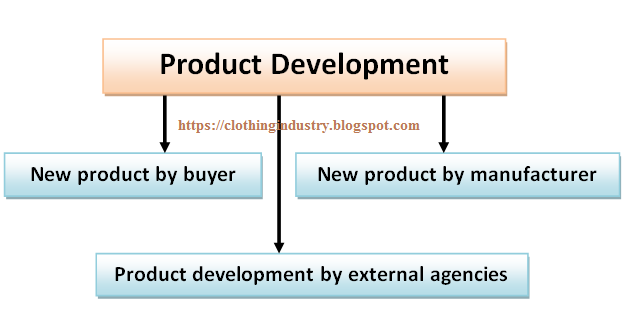Product development:
To create the next product in a company’s product line, a design team goes through product development process steps. Starting with a product idea, the team moves through several stages to generate all the details and documents needed to get the product built. A new product development process goes through the same steps, however, as this product has not been developed by the team before, new risks and uncertainties are introduced and often additional information is documented and shared with manufacturing. The flow of typical product development process in apparel industry is provided in figure, this remains common for all categories of product development. In apparel industry, once, the market potential, customer requirements like, colour, silhouette, fabric and design aspects are evaluated by the fashion forecasting process, the conceptual design is developed by the designer in paper as a 2D form. Once the designs are finalised, the designers and merchandiser will sit together to finalise the specifications and technical aspects of the garment. Here, they will use their knowledge from their previous experience with their market and product.
Product Development Process in Apparel Industry:
The product development process in apparel industry generally happens in three different levels,
 |
| Fig: Product development process |
Once the forecasting process is completed in all sectors like, customer, product design, market requirement, etc., the first steps of silhouette development and fabric selection are approached in different ways by different designers and companies. Many companies base their lines around fabric and print designs. Their designers start by selecting fabrics and then create silhouettes for those fabrics. These designers are fabric driven. Other designers are silhouette-driven designs and product specifications are developed by the buyer and all the necessary information will be provided to the manufacturing merchandiser to develop the product prototype.
ii) New product by manufacturer:
The manufacturing organisation’s design team along with merchandiser use to develop new products for their buyer. The product development is the business policy of the organization which includes the development of the new designs and styles within the organisation. This process provides more business to the organization, by showing pro-activeness in design development process by knowing the needs and wants of the customers/buyers and it helps in impressing the clients. Production merchandiser must update the buyer time to time about the product development done by organisation. The buyer visiting the factory is one of the key activities, where merchandiser can develop some positive opinion on the company by showing their facility and designer teams. This motivates the buyer to give the design development to the organisation instead of doing themselves. Whenever buyer visits the organization, new colour, prints, embroidery patterns and desk loom developments need to be presented to them by production merchandiser. Merchandiser should influence the buyer to select the designs from presentation presented. A very good presentation and convincing ability of production merchandiser bring more business to the organisation.
iii) Product development by external agencies / Studios:
In this case, the external agencies perform the product development process based on their expertise and research data they have. Buyers or manufacturers will source the designs concepts and specifications from these agencies with respect to the season and needs.


Comments
Post a Comment